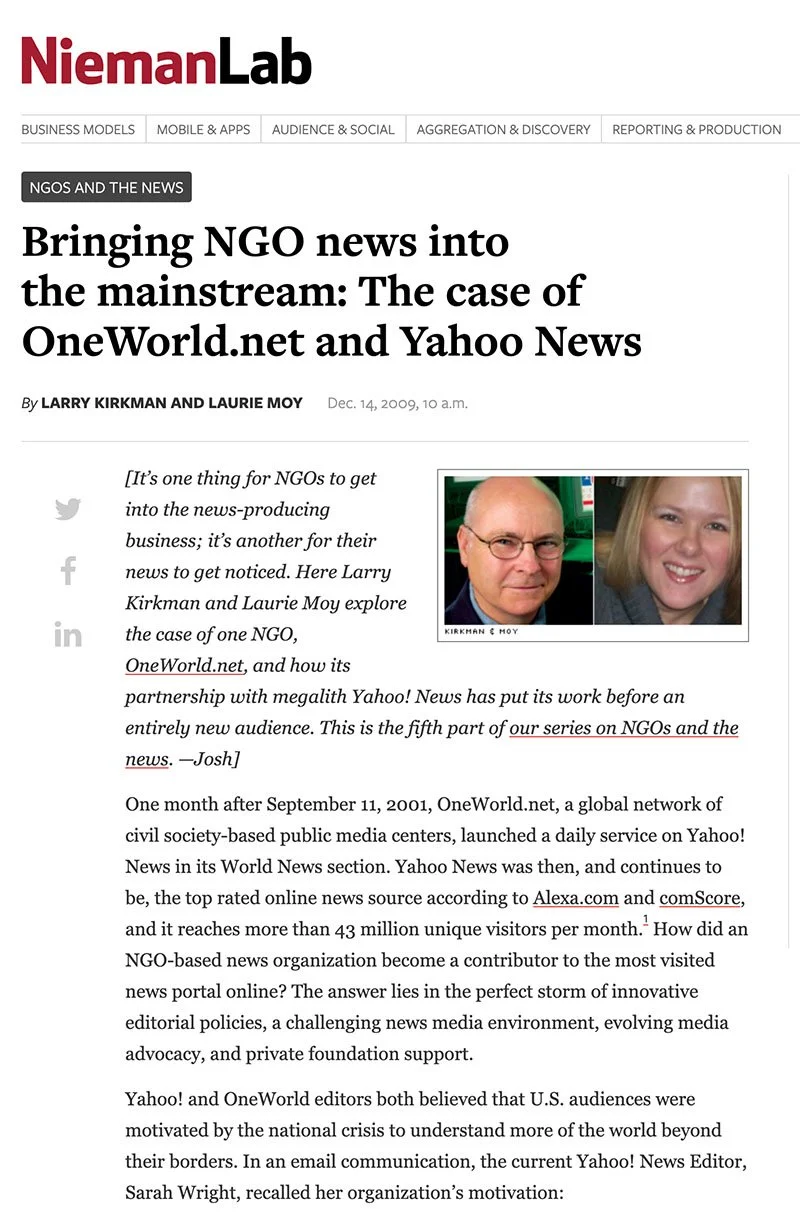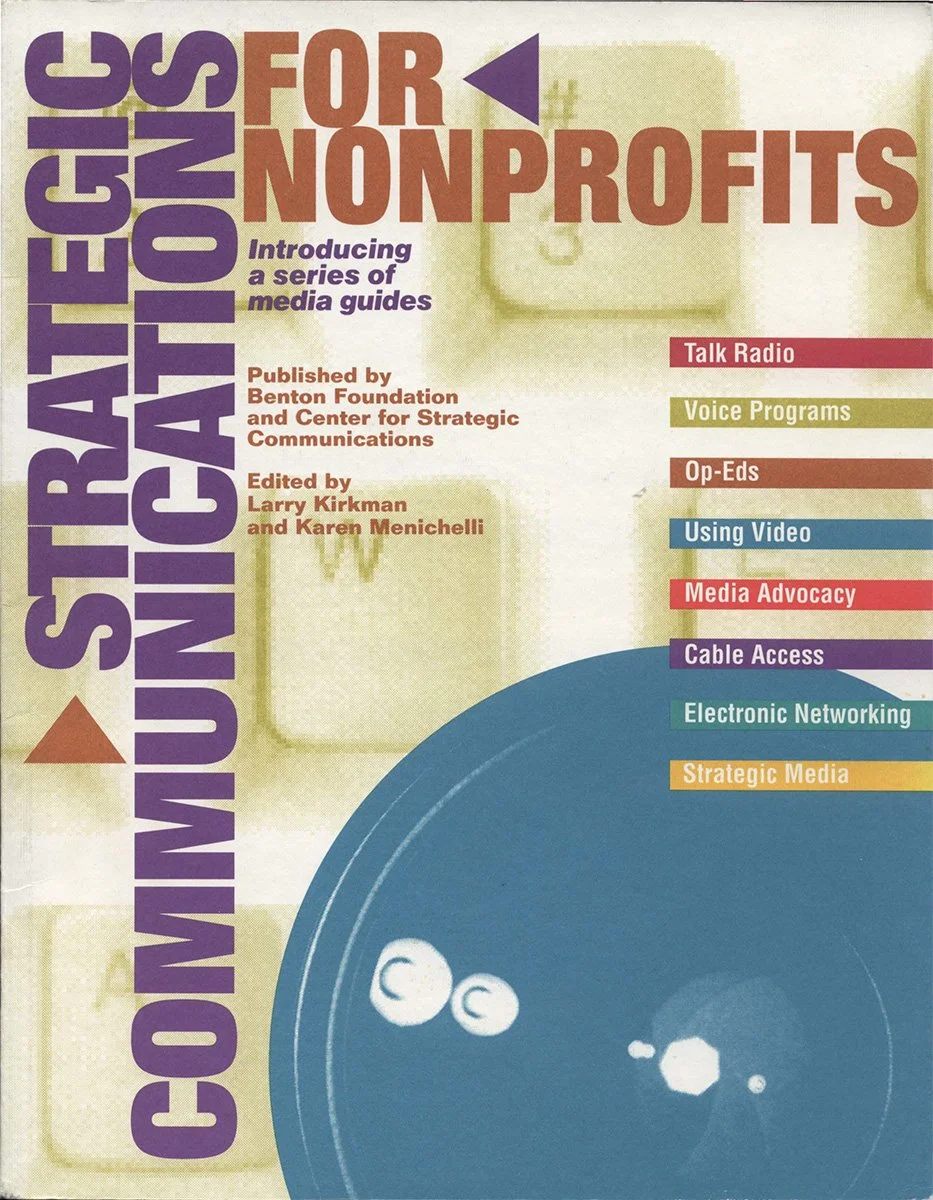AFI ENTERS THE VIDEO AGE
I wrote AFI Enters the Video Age: Remembering the National Video Festival for a work-in-progress memoir. Jean Firstenberg and James Hindman asked me to adapt it for a history of the American Film Institute, Becoming AFI: 50 Years Inside the American Film Institute.
I was AFI’s first director for television and video from 1980 to 1982, where I produced the first two festivals. In the photo, I’m introducing keynote speaker, Erik Barnouw, and welcoming an audience of 500 in The Kennedy Center’s Terrace Theater.
KIDSCAMPAIGNS AND CONNECTFORKIDS AT THE BENTON FOUNDATION
It started with a cold call from the Advertising Council to the Children’s Defense Fund (CDF). In 1996, the Ad Council, with more than $2 billion a year in donated media for public service advertising, decided to make a ten-year commitment to campaigns on behalf of children as the centerpiece of its work. To launch the initiative, the Ad Council was looking for a partner who could deliver a grassroots network and reinvent fulfillment for the digital age, replacing 800 numbers and brochures with websites to provide information and resources for action. CDF said, That’s not what we do, but you should talk to the Coalition for America’s Children and Larry Kirkman at the Benton Foundation.
STRATEGIC MEDIA MAKING AND IMPACT PRODUCING
I wrote Strategic Media Making and Impact Producing as a contribution to The New Storytellers: Documentary Filmmaking in the 21st Century, a chapter by American University film and media arts professors in The 21st Century Film & TV School, a book published by CILECT, the international association of film and television schools.
In my course on social documentary and as head of the graduate concentration in social impact, I helped students take on issues of critical public importance.
Whatever their purpose, to shift public dialogue, motivate behavior change, equip activists for advocacy and movement building, or change government or corporate policies, they learned to tell the stories, portray the characters and provide the evidence and testimony that drive public debate.
FROM GETTING REAL 2018: MY REPORTS FOR DOCUMENTARY MAGAZINE
Advocacy for Documentary and the Role of Documentary in the Public Sphere
Getting Real 2018 used complementary sessions to examine documentaries as tools for public knowledge and action as well as the policies, best practices and standards that enable documentary-making and distribution. In her “mini-keynote” that she delivered the day before “The Role of Documentary in the Public Sphere,” ITVS CEO Sally Jo Fifer called on the field to project the standards and values of independent documentary in an increasingly commercialized, dynamic and blended marketplace by holding true to the long-held commitment to diversity, equity and inclusion. “Our purpose stays clear, no matter what disruptions come our way,” she asserted. “It is vital to keep the balance between public, nonprofit and market partners healthy in this disruptive economy to make sure that the boom does not damage our ecosystem and what we stand for, and that public and philanthropic funds are there whether the tide is in or out.”
Creative Courage in NonFiction Storytelling
Alain Resnais said about Night and Fog, “I want to address the viewer in a critical state…to create a space for contemplation.” In the Getting Real session entitled “Creative Courage in Nonfiction Storytelling,” filmmakers Yance Ford, Jenni Olson and Jennie Livingston showed us how to do just that.
Taken together, their personal essay films—Ford’s Strong Island, Olson’s The Royal Road and Livingston’s work-in-progress, Earth Camp One—reflect many of the formal choices that distinguish Renais’ film. He insisted on concentration camp inmate and poet Jean Cayrol as the author of the narration. Silence and music by Hans Eisler focus the viewer’s attention, along with extended tracking shots and landscapes of the barracks, and the use of color for the present, in contrast to the black and white archival footage. And, he infused the work with shocking moments of humor. He did whatever it took to remember and ask why.
The session was a model for filmmakers discussing their work. Their rapt attention to each other’s clips, their searching questions and their appreciation of the risks each had taken were adopted by the audience in an insightful Q&A.
The interdependence of the personal and political was a through-line in presentations and discussion. Livingston remarked about Ford’s and Olson’s works: “A personal film is really a political film and I think that is really true of both of your films.”
BRINGING NGO NEWS INTO THE MAINSTREAM
The Nieman Journalism Lab at Harvard University asked me to contribute an article on One World for a series on NGOs and the News. I recruited Laurie Moy as co-author to tell the story of One World’s partnership with Yahoo and make the case for NGOs as a trusted source of news and information on critical social issues. I launched the U.S. Center for One World at the Benton Foundation in 2000 and served as chair of the board of the global network from 2002 to 2006. In 2005, Pierre Omidyar, co-founder of eBay, explained to Business Week magazine why his foundation chose to get involved.
“We’ve done a little bottom-up media with OneWorld. I have a sense that the traditional media hasn’t been aggressive enough talking about important issues. The empowering nature of people reporting their own news, speaking out, and challenging governments and even traditional media sometimes is a very powerful thing.”
STRATEGIC COMMUNICATIONS FOR NONPROFITS
As executive director of the Benton Foundation, I published and co-edited a set of media guides, Strategic Communications for Nonprofits, with associate director, Karen Menichelli, in 1992. The guides covered media advocacy, electronic networking and production and distribution. As a package, the guides made a case for a comprehensive and integrated approach to communications and anticipated the emerging digital environment. Ford, MacArthur, Robert Wood Johnson, Carnegie and Kellogg foundations printed and distributed the guides for their grantees. The Communications Consortium Media Center, which wrote the guide on Strategic Media, took the title Strategic Communications for Nonprofits for a book in 2008 and asked me to write this foreword, looking back on the mission and impact of the original guides and the need for the new edition.
U.S. PUBLIC MEDIA AT IDFA
I wrote a story for Current on the U.S. public television presence at the International Documentary Film Festival Amsterdam, IDFA, and its market for new films. I brought Current, the journal for public media, to American University as a project of the School of Communication from WNET-TV in 2010. IDFA attracts more than 2,000 documentary professionals from around the world, and sells more than 250,000 tickets for some 300 films.
IDFA veteran Klara Grunning, a commissioning editor at the Swedish Film Institute who worked for ITVS for 11 years, described IDFA as a mecca for international documentary:
“It’s definitely one of the best places to launch a project in development or a newly completed film.”
Director Stanley Nelson takes questions at IDFA after screening his Independent Lens film The Black Panthers: Vanguard of the Revolution.








